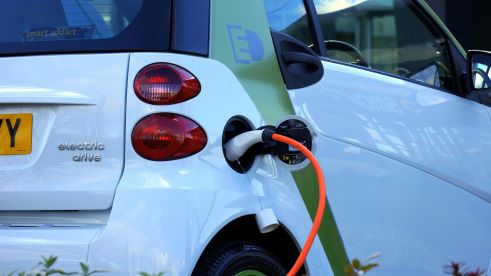The push for cleaner, more sustainable energy sources has never been more crucial. Clean energy tax incentives are at the forefront of this movement, providing both individuals and businesses with the motivation to invest in renewable energy.
These incentives not only benefit the environment but also offer significant financial advantages.
In this article, we will explore the various types of clean energy tax incentives, their benefits, and how they are shaping the future of energy consumption.

What Are Clean Energy Tax Incentives (ITC)?
Clean energy tax incentives are financial benefits provided by governments to encourage the adoption of renewable energy sources. These incentives come in various forms, including tax credits, deductions, rebates, and grants. They are designed to reduce the initial cost of investing in clean energy technologies, making it more affordable for homeowners, businesses, and industries to transition from fossil fuels to renewable energy.
Different Types of ITCs
Federal Tax Credits
The United States federal government offers several tax credits to promote clean energy. One of the most well-known is the Investment Tax Credit (ITC), which allows homeowners and businesses to deduct a significant percentage of the cost of installing solar energy systems from their federal taxes. Another important incentive is the Production Tax Credit (PTC), which provides financial support for the generation of renewable energy from sources like wind and geothermal.
State and Local Incentives
In addition to federal incentives, many states and local governments offer their own clean energy tax incentives. These can vary widely but often include property tax exemptions, sales tax exemptions, and additional state-specific tax credits. For example, California offers substantial rebates for solar panel installations, while New York provides significant incentives for energy efficiency upgrades and renewable energy projects. To understand how these changes impact nonprofit organizations, consider exploring the Clean Energy Tax Credit in more detail. By doing so, we can see the broader implications and benefits for nonprofits in adopting sustainable practices.
Utility Company Rebates
Many utility companies also provide incentives to encourage the use of clean energy. These can include rebates for installing energy-efficient appliances, solar panels, or wind turbines. Utility rebates can be combined with federal and state incentives, making clean energy investments even more attractive. A lot of these can also be non-profit organizations.
Benefits of ITCs
Financial Savings
The most immediate benefit of clean energy tax incentives is the potential for significant financial savings. By reducing the cost of renewable energy systems and energy-efficient upgrades, these incentives lower the barrier to entry for clean energy investments. Over time, the savings on energy bills can be substantial, making the initial investment well worth it. Understanding the significance of lighting can be enhanced by exploring its role in the 179D tax deduction, highlighting how efficient lighting solutions contribute to energy savings and financial benefits.
Environmental Impact
Clean energy tax incentives also play a crucial role in reducing carbon emissions and promoting environmental sustainability. By making renewable energy sources more accessible, these incentives help decrease reliance on fossil fuels, reduce greenhouse gas emissions, and combat climate change. This shift towards cleaner energy sources contributes to a healthier planet and a more sustainable future.
Non-profits can unlock significant advantages by passing on 179D tax deductions, which can provide substantial financial incentives for energy-efficient building improvements.
Economic Growth
Investments in clean energy spur economic growth by creating jobs and fostering innovation. The renewable energy sector is one of the fastest-growing industries, providing numerous opportunities for employment in manufacturing, installation, maintenance, and research and development. Clean energy tax incentives help stimulate this growth by making it financially viable for more people and businesses to enter the market.
How to Take Advantage of ITCs
Research Available Incentives
The first step in taking advantage of clean energy tax incentives is to research what incentives are available in your area. This can include federal, state, and local programs, as well as rebates offered by utility companies. Websites like the Database of State Incentives for Renewables & Efficiency (DSIRE) can be a valuable resource for finding up-to-date information on available incentives.
Consult with Professionals
Installing renewable energy systems and making energy-efficient upgrades often require professional expertise. Consulting with contractors, energy auditors, and financial advisors can help you understand the best options for your specific situation and ensure that you maximize the benefits of available incentives.
Plan and Invest
Once you have identified the relevant incentives and consulted with professionals, it’s time to plan your investment. Whether you’re installing solar panels, upgrading to energy-efficient appliances, or implementing a comprehensive energy management system, careful planning will help you make the most of available tax incentives and achieve long-term savings.
The Future of Clean Energy Tax Incentives
The landscape of clean energy tax incentives is continually evolving. Governments at all levels are recognizing the importance of renewable energy and are likely to expand and enhance these incentives in the coming years. Staying informed about changes in policy and new incentives can help individuals and businesses continue to benefit from financial savings while contributing to a more sustainable future.
Conclusion
Clean energy tax incentives are a powerful tool in the transition to a more sustainable energy future. By making renewable energy sources more accessible and affordable, these incentives provide significant financial savings, reduce environmental impact, and stimulate economic growth. Understanding and taking advantage of these incentives can help drive the widespread adoption of clean energy technologies, paving the way for a healthier planet and a more sustainable energy landscape. Maximize your green incentives with guidance from experienced renewable energy tax experts who specialize in sustainable tax solutions.
If you’re ready to explore the ITC tax credit benefits that may be available to your firm, our tax credit advisors are happy to provide you with a free consultation.









